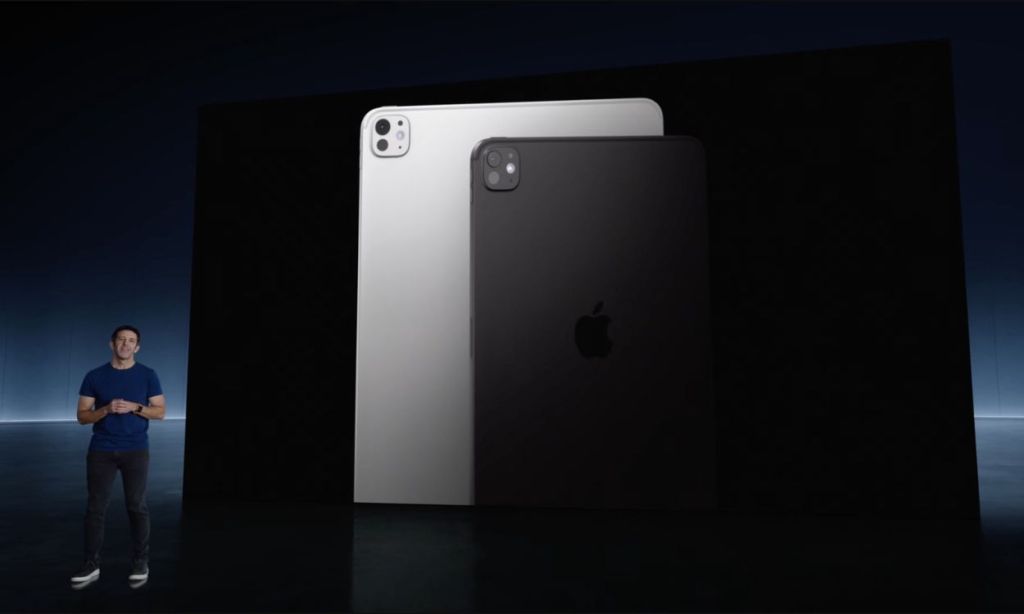The new iPad Pro with the M4 chip was the highlight of Apple’s Let Loose event. Powering the iPad is a highly capable M4 chipset, based on the 2nd gen 3-nanometer chip fabrication process. Apple claimed that the M4 is twice as powerful as the M2 chip in CPU processing and is AI-ready for running generative AI models. As the chip is out, its benchmarks have started surfacing on the internet. Interestingly, benchmark leaks have revealed that the M4 iPad Pro is more powerful than the Mac Studio with the M2 Max chipset that costs around $2,000.
A 5.1mm thin device outperforming an entire desktop is a feat in itself for which Apple deserves some applause but can you really leverage this power? Well, not until iPadOS is equally capable.
iPad Pro – V8 Engine in a Corolla

Before the arrival of M-series chips, Apple considered iPads an extension of iPhones. The company was lost on the iPads’ placement in its catalog and with the same chipset as iPhones (overclocked sometimes), iPads were merely iPhones with a bigger screen. However, with Apple Silicon things changed drastically for iPads. The M1 chip in the debutant iPad Pro was a game changer. Not only was it 50% more powerful than the previous generation iPad, but it absolutely smoked the MacBook Pro with an Intel i9 Processor.
When the first iPad Pro with the M1 chip was released, there were opinions that the chip was an overkill for the hardware. Things have not changed much even today. The M4 chip is quite powerful for an extremely thin and fanless device. Geekbench 6 benchmarks show that each core of the M4 chip in the iPad Pro (1TB) runs at 4.4GHz. The single-core score of 3,767 is the highest a consumer-centric chip has scored in benchmarks.
But this begs the question – for what use case do you really need this much peak performance? Suppose you belong to that minuscule segment of iPad power users who perform 3D rendering, video editing, and other power-intensive tasks on your iPad. In that case, it makes sense but for others not so much. Apple has, for some time now, started marketing the iPad Pro as a device meant for professionals.
But is the iPad Pro really a professional device? The lack of additional ports and a dearth of Pro apps is a major hindrance, as I see it. Even if the hardware fits into your professional workflow, iPadOS is the biggest letdown.
Apple’s Reluctance to Level up iPad’s Software to Its Hardware
I think anyone would agree with the fact that iPadOS, in its current state, is quite unintuitive, lacks Pro features, and is absolutely shoddy on the multitasking front. It is the albatross around the neck of the iPad as a product. Before the introduction of M-series chips and iPadOS, Apple nerfed iPads because it didn’t want to make them as powerful as Macs so as to avoid iPads from biting a chunk into Mac sales. However, those days are long gone. iPad Pro M4 is faster than MacBook Pro current-gen models and even Mac Studio.
When iPadOS was launched in 2019, many perceived it not to be a simple rebranding of iOS but a major step towards making iPads really capable devices that can be the bridge between a Mac and an iPhone. Fast-forward five years, not much has changed. Stage Manager was brought in 2022 to offer the much-demanded multitasking feature on iPads. However, it remained a half-baked feature that most users were unbothered about.
If you have ever tried multitasking on an iPad, you’d know that iPadOS is quite restrictive. You cannot place more than 4 apps on the screen. There is also no functionality to move apps/windows at your convenience.
Besides multi-tasking, iPadOS has several other flaws as well. The home screen and lock screen are lackluster and need a revamp. Apple can simplify the icon placement and simplify both screens. I really liked the lock screen and home screen interface on iPadOS 14.
It was clean, minimal, and devoid of bells and whistles to not make the screen as overwhelming as it is today. However, it came at the cost of widgets but I believe Apple can find a way to amalgamate widgets and simplicity.
The lack of an Always-On display is another feature that iPadOS lacks. Additionally, Apple should also improve the Control Center on iPad. At the moment, if you are using an iPad with one hand and if you are left-handed, accessing the Control Center is a task in itself.
iPadOS, in itself, is an unpolished OS and it seems that Apple did not design it by keeping the powerful hardware of iPads in mind. The resource allocation of the iPad team at Apple has adopted a wrong approach. Usability outweighs capability any day for me. iPad’s hardware is more than capable already and the extreme focus on size, weight, thinness, and performance is where Apple falters in its commitment to iPads.
With WWDC coming up next month, I have huge hopes for iPadOS and I am hopeful that Apple will bring some meaningful features and revamp the OS as a whole. At the same time, I am skeptical because the AI-hype train can sweep away these features.